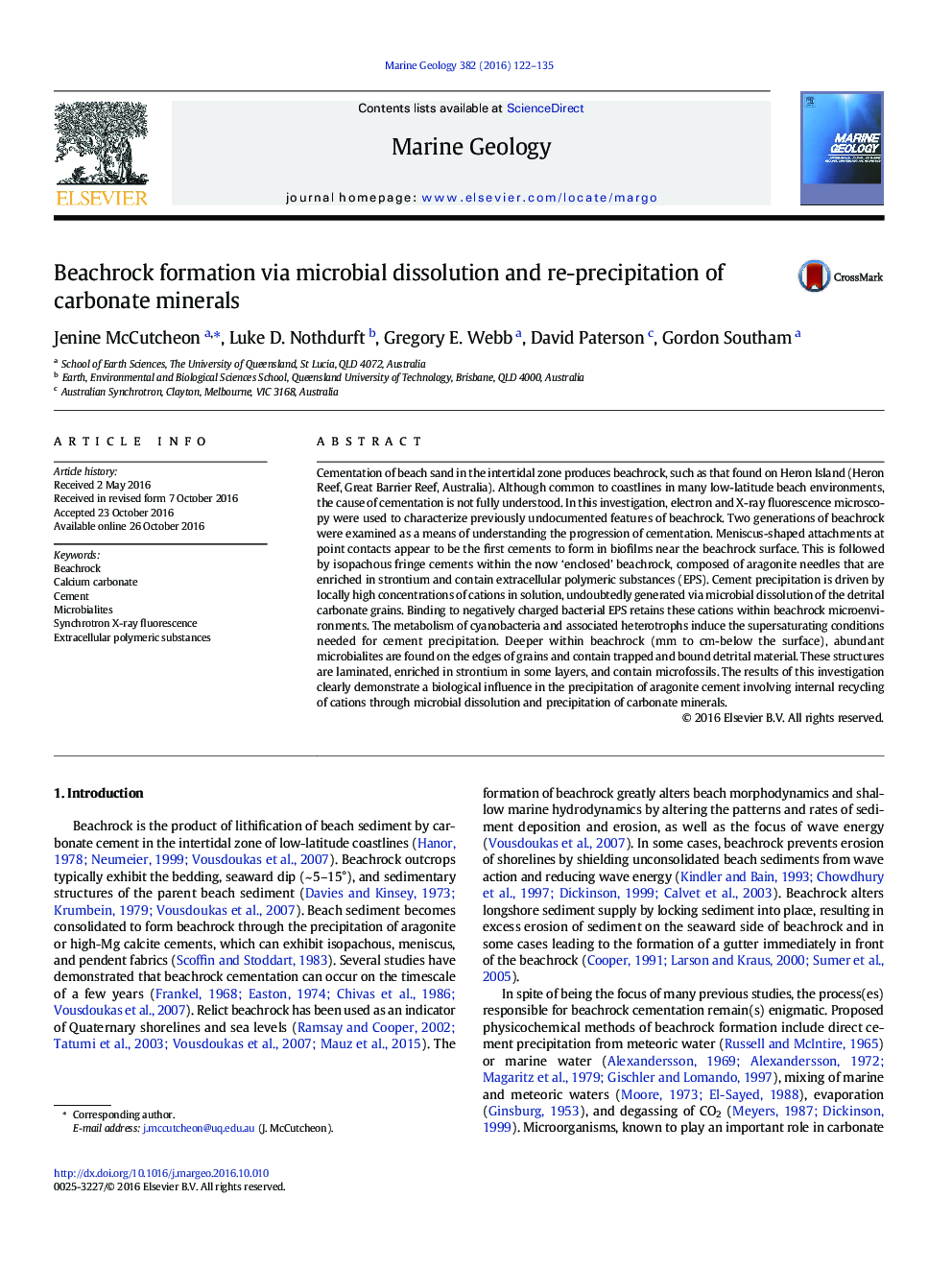| کد مقاله | کد نشریه | سال انتشار | مقاله انگلیسی | نسخه تمام متن |
|---|---|---|---|---|
| 4718110 | 1639070 | 2016 | 14 صفحه PDF | دانلود رایگان |
• Beachrock provides habitats for endolithic microorganisms in the intertidal zone.
• Dissolution of grains in beachrock via microbial boring releases soluble cations.
• Microbial photosynthesis aids aragonite cement formation to produce beachrock.
• Aragonitic microbialites in beachrock are typically enriched in Sr.
• Microbialites in beachrock are laminated due to seasonal changes in nutrient input.
Cementation of beach sand in the intertidal zone produces beachrock, such as that found on Heron Island (Heron Reef, Great Barrier Reef, Australia). Although common to coastlines in many low-latitude beach environments, the cause of cementation is not fully understood. In this investigation, electron and X-ray fluorescence microscopy were used to characterize previously undocumented features of beachrock. Two generations of beachrock were examined as a means of understanding the progression of cementation. Meniscus-shaped attachments at point contacts appear to be the first cements to form in biofilms near the beachrock surface. This is followed by isopachous fringe cements within the now ‘enclosed’ beachrock, composed of aragonite needles that are enriched in strontium and contain extracellular polymeric substances (EPS). Cement precipitation is driven by locally high concentrations of cations in solution, undoubtedly generated via microbial dissolution of the detrital carbonate grains. Binding to negatively charged bacterial EPS retains these cations within beachrock microenvironments. The metabolism of cyanobacteria and associated heterotrophs induce the supersaturating conditions needed for cement precipitation. Deeper within beachrock (mm to cm-below the surface), abundant microbialites are found on the edges of grains and contain trapped and bound detrital material. These structures are laminated, enriched in strontium in some layers, and contain microfossils. The results of this investigation clearly demonstrate a biological influence in the precipitation of aragonite cement involving internal recycling of cations through microbial dissolution and precipitation of carbonate minerals.
Figure optionsDownload as PowerPoint slide
Journal: Marine Geology - Volume 382, 1 December 2016, Pages 122–135
